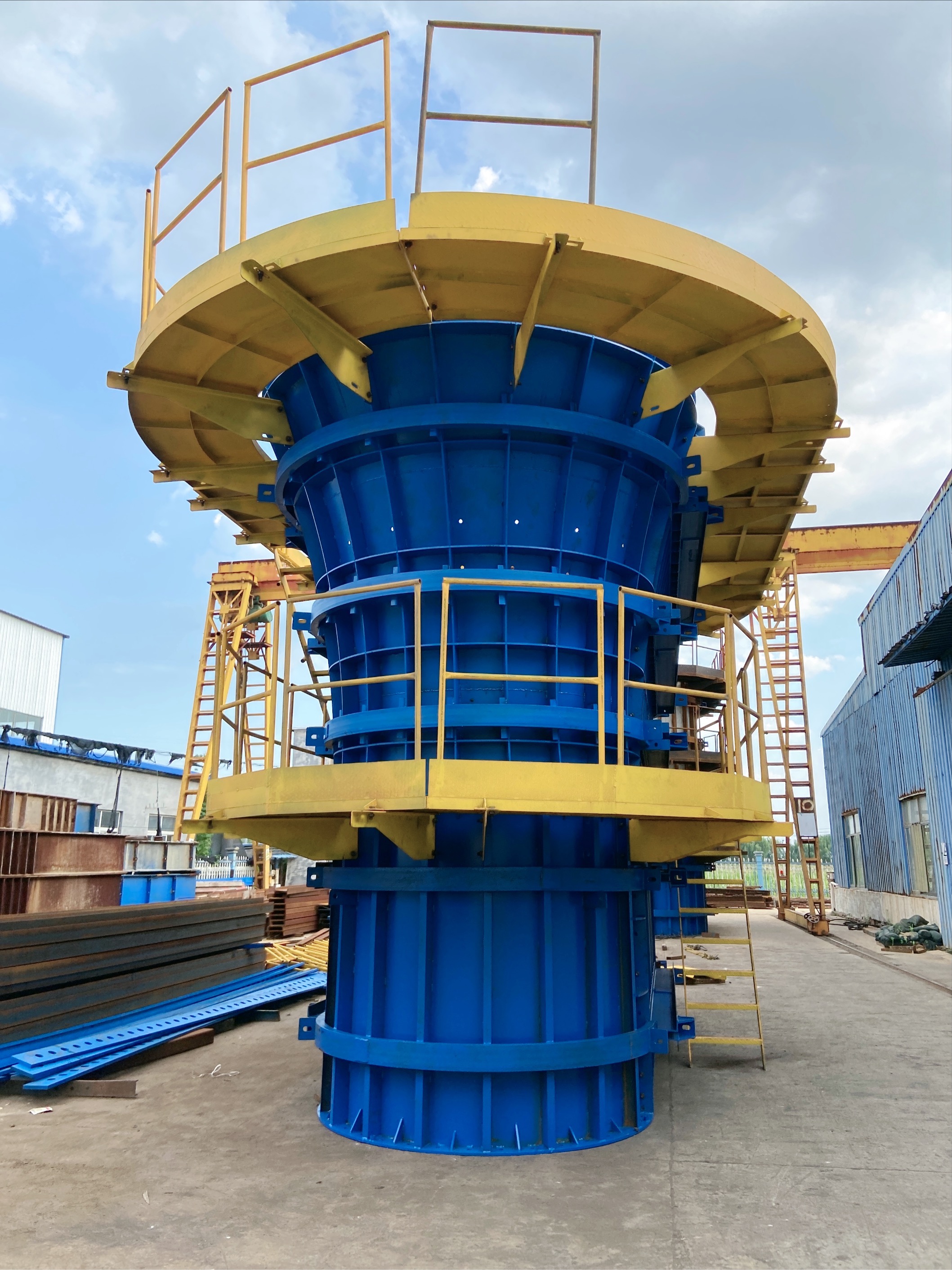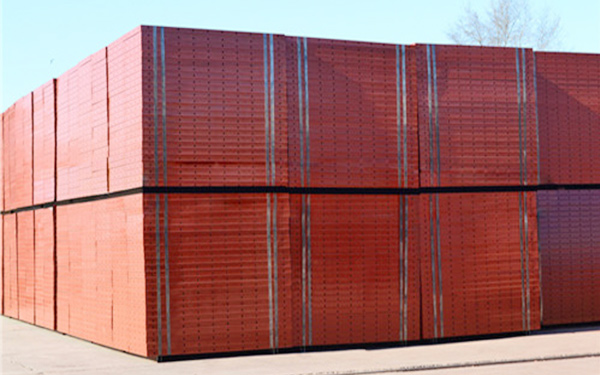Current position:
Home
News home
Industry News
Customized processing of bridge steel formwork: how to prevent and deal with unstable formwork support?
Customized processing of bridge steel formwork: how to prevent and deal with unstable formwork support?
source:Shandong Tianhong Heavy Industry Co., Ltd
Abstract:
In construction engineering, an unstable formwork support system may cause deformation of the formwork, dimensional deviation of the concrete structure, and even lead to collapse accidents. The following are prevention and treatment measures for unstable formwork, covering the entire process of design, construction, and acceptance:
1、 Common reasons for unstable formwork support
Design flaw: Insufficient calculation of support system load, failure to consider concrete lateral pressure, construction dynamic load, and environmental factors (such as wind load).
Material issues: Insufficient strength and bending deformation of supporting rods (steel pipes, wooden beams), or substandard quality of fasteners, top supports, and other accessories.
Construction violations: excessive spacing between supports, missing horizontal ties, suspended poles or loose pads, and loose node connections.
Management oversight: Construction was not carried out according to the plan, and there was a lack of process inspection and acceptance.
2、 Preventive measures for unstable formwork support
1. Design phase
Accurate calculation of load:
Based on the self weight of concrete (24kN/m ³), pouring speed, and weight of construction equipment, calculate the spacing between uprights, the step distance between crossbars, and the arrangement of diagonal braces to ensure the stability of the support system.
For example, for conventional floor slabs (thickness ≤ 200mm), the spacing between uprights is usually ≤ 1.2m × 1.2m, and the step distance is ≤ 1.5m.
Choose a standardized support system:
Priority should be given to using clip type steel pipe frames, plate clip frames, or aluminum alloy formwork support systems to avoid mixing different material members.
2. Material control
Strictly control incoming materials:
Steel pipe wall thickness ≥ 3.0mm (national standard requirement), without rust or cracks;
Wooden cross-section size ≥ 50mm × 100mm, moisture content ≤ 15%;
The anti slip coefficient of the fastener is ≥ 0.8, and the diameter of the jacking screw is ≥ 36mm.
Eliminate defective materials:
Steel pipes and split timber with bending deformation exceeding 1/500 of the length of the pole shall be scrapped.
3. Construction process management
Standardize the installation process:
Basic treatment: The ground shall be compacted and a 50mm thick wooden pad shall be laid. The upright pole shall not be directly erected on the soil or suspended in the air;
Verticality of uprights: deviation ≤ 1/200, alignment of upper and lower uprights, and no misalignment or overlapping is allowed;
Horizontal tie: Set vertical and horizontal horizontal bars at each step, and install a sweeping rod 200mm above the ground;
Scissor braces: Vertical scissor braces are installed on the outer side of the frame, and horizontal scissor braces are added when the span is ≥ 5m (spacing ≤ 6m).
Key node reinforcement:
Add top supports or double fasteners at the bottom of the beam to resist sliding;
In the area of high formwork (height ≥ 5m), densely install vertical poles and use columns, wall connecting components, and structural ties.
4. Acceptance and monitoring
Graded acceptance:
Self inspection by the team → re inspection by the project technical leader → final inspection by the supervisor, with a focus on checking the spacing between uprights, fastener torque (40-65N · m), and the stability of the cushion plate.
Pre pressure monitoring:
Before pouring, the support system shall be preloaded with a load ≥ 1.1 times the design value, and the settlement shall be monitored (≤ 3mm/day is qualified).
Intelligent monitoring:
Real time monitoring of high support mold areas using stress sensors or inclinometers, and timely warning of abnormalities.
3、 On site handling measures for unstable formwork support
1. It was found to be unstable before pouring
Partial reinforcement:
Dense upright tube or add slant support (angle 45 °~60 °);
Add top support or double steel pipe support at the bottom of the beam;
Tighten the loose fasteners again (torque wrench test).
Rework and reconstruction:
Serious violations (such as missing poles or large areas of suspension) require dismantling and reinstallation according to the plan.
2. Emergency treatment for collapse during pouring process
Immediately stop work:
Stop pouring, evacuate personnel, and designate hazardous areas.
Temporary support:
Urgently reinforce the non collapsed area with steel pipes and wooden blocks to prevent secondary disasters.
Assessment and repair:
Remove the collapsed concrete and inspect the deformation of the steel bars;
Provide a reinforcement plan by the design unit (such as wrapping with carbon fiber cloth and increasing the cross-section);
Re support the formwork and continue construction after passing the acceptance inspection.
3. Quality defect handling after demoulding
Surface repair:
After chiseling the rough surface and exposed reinforcement, repair with epoxy mortar, and fill the honeycomb holes with high-pressure grouting.
Structural reinforcement:
When the deformation exceeds the limit (such as beam bottom deflection>L/400), steel plates need to be pasted or support points need to be added for reinforcement.
4、 Typical scenario response plan
Targeted measures for scene risk points
Large span structures with excessive mid span deflection are supported by steel trusses at the bottom of the beam, reducing the spacing between columns to 0.9m × 0.9m
The transfer layer of high-rise buildings has a large concentrated load, and the support instability is caused by the combination of plate buckle frame and steel beam support, with embedded steel columns transmitting the load
Anti slip steel plate is welded at the bottom of the sliding pole of sloping roof, and slant support is tied to the structural wall
The high lateral pressure on the concrete of the basement exterior wall leads to the densification of the expansion mold's tension bolts (horizontal ≤ 400mm, vertical ≤ 500mm)
5、 Long term management suggestions
Technical briefing: Before construction, clarify the requirements for setting up the support system to the team, with a focus on node construction methods.
BIM application: Optimize support layout and collision detection through 3D modeling to avoid pipeline conflicts.
Personnel training: Regularly organize specialized training on formwork engineering to enhance workers' awareness of standardized operation.
Archive management: Retain acceptance records and monitoring data of the supporting system to achieve quality traceability.
summarize
The solution to unstable formwork requires adherence to the four principles of "precise design, qualified materials, standardized construction, and strict inspection":
Prevention: Eliminate hidden dangers through scientific design, material control, and standardized construction;
Handling: Quickly respond to problems at different stages, prioritize security, and then repair according to the plan;
Improvement: Combining technological means (such as intelligent monitoring) and management upgrades to enhance the overall reliability of formwork engineering.
Design flaw: Insufficient calculation of support system load, failure to consider concrete lateral pressure, construction dynamic load, and environmental factors (such as wind load).
Material issues: Insufficient strength and bending deformation of supporting rods (steel pipes, wooden beams), or substandard quality of fasteners, top supports, and other accessories.
Construction violations: excessive spacing between supports, missing horizontal ties, suspended poles or loose pads, and loose node connections.
Management oversight: Construction was not carried out according to the plan, and there was a lack of process inspection and acceptance.
2、 Preventive measures for unstable formwork support
1. Design phase
Accurate calculation of load:
Based on the self weight of concrete (24kN/m ³), pouring speed, and weight of construction equipment, calculate the spacing between uprights, the step distance between crossbars, and the arrangement of diagonal braces to ensure the stability of the support system.
For example, for conventional floor slabs (thickness ≤ 200mm), the spacing between uprights is usually ≤ 1.2m × 1.2m, and the step distance is ≤ 1.5m.
Choose a standardized support system:
Priority should be given to using clip type steel pipe frames, plate clip frames, or aluminum alloy formwork support systems to avoid mixing different material members.
2. Material control
Strictly control incoming materials:
Steel pipe wall thickness ≥ 3.0mm (national standard requirement), without rust or cracks;
Wooden cross-section size ≥ 50mm × 100mm, moisture content ≤ 15%;
The anti slip coefficient of the fastener is ≥ 0.8, and the diameter of the jacking screw is ≥ 36mm.
Eliminate defective materials:
Steel pipes and split timber with bending deformation exceeding 1/500 of the length of the pole shall be scrapped.
3. Construction process management
Standardize the installation process:
Basic treatment: The ground shall be compacted and a 50mm thick wooden pad shall be laid. The upright pole shall not be directly erected on the soil or suspended in the air;
Verticality of uprights: deviation ≤ 1/200, alignment of upper and lower uprights, and no misalignment or overlapping is allowed;
Horizontal tie: Set vertical and horizontal horizontal bars at each step, and install a sweeping rod 200mm above the ground;
Scissor braces: Vertical scissor braces are installed on the outer side of the frame, and horizontal scissor braces are added when the span is ≥ 5m (spacing ≤ 6m).
Key node reinforcement:
Add top supports or double fasteners at the bottom of the beam to resist sliding;
In the area of high formwork (height ≥ 5m), densely install vertical poles and use columns, wall connecting components, and structural ties.
4. Acceptance and monitoring
Graded acceptance:
Self inspection by the team → re inspection by the project technical leader → final inspection by the supervisor, with a focus on checking the spacing between uprights, fastener torque (40-65N · m), and the stability of the cushion plate.
Pre pressure monitoring:
Before pouring, the support system shall be preloaded with a load ≥ 1.1 times the design value, and the settlement shall be monitored (≤ 3mm/day is qualified).
Intelligent monitoring:
Real time monitoring of high support mold areas using stress sensors or inclinometers, and timely warning of abnormalities.
3、 On site handling measures for unstable formwork support
1. It was found to be unstable before pouring
Partial reinforcement:
Dense upright tube or add slant support (angle 45 °~60 °);
Add top support or double steel pipe support at the bottom of the beam;
Tighten the loose fasteners again (torque wrench test).
Rework and reconstruction:
Serious violations (such as missing poles or large areas of suspension) require dismantling and reinstallation according to the plan.
2. Emergency treatment for collapse during pouring process
Immediately stop work:
Stop pouring, evacuate personnel, and designate hazardous areas.
Temporary support:
Urgently reinforce the non collapsed area with steel pipes and wooden blocks to prevent secondary disasters.
Assessment and repair:
Remove the collapsed concrete and inspect the deformation of the steel bars;
Provide a reinforcement plan by the design unit (such as wrapping with carbon fiber cloth and increasing the cross-section);
Re support the formwork and continue construction after passing the acceptance inspection.
3. Quality defect handling after demoulding
Surface repair:
After chiseling the rough surface and exposed reinforcement, repair with epoxy mortar, and fill the honeycomb holes with high-pressure grouting.
Structural reinforcement:
When the deformation exceeds the limit (such as beam bottom deflection>L/400), steel plates need to be pasted or support points need to be added for reinforcement.
4、 Typical scenario response plan
Targeted measures for scene risk points
Large span structures with excessive mid span deflection are supported by steel trusses at the bottom of the beam, reducing the spacing between columns to 0.9m × 0.9m
The transfer layer of high-rise buildings has a large concentrated load, and the support instability is caused by the combination of plate buckle frame and steel beam support, with embedded steel columns transmitting the load
Anti slip steel plate is welded at the bottom of the sliding pole of sloping roof, and slant support is tied to the structural wall
The high lateral pressure on the concrete of the basement exterior wall leads to the densification of the expansion mold's tension bolts (horizontal ≤ 400mm, vertical ≤ 500mm)
5、 Long term management suggestions
Technical briefing: Before construction, clarify the requirements for setting up the support system to the team, with a focus on node construction methods.
BIM application: Optimize support layout and collision detection through 3D modeling to avoid pipeline conflicts.
Personnel training: Regularly organize specialized training on formwork engineering to enhance workers' awareness of standardized operation.
Archive management: Retain acceptance records and monitoring data of the supporting system to achieve quality traceability.
summarize
The solution to unstable formwork requires adherence to the four principles of "precise design, qualified materials, standardized construction, and strict inspection":
Prevention: Eliminate hidden dangers through scientific design, material control, and standardized construction;
Handling: Quickly respond to problems at different stages, prioritize security, and then repair according to the plan;
Improvement: Combining technological means (such as intelligent monitoring) and management upgrades to enhance the overall reliability of formwork engineering.
Disclaimer: The content provided on this website is for reference only (some information is sourced from the internet). The publication of content information is for the purpose of transmission and does not represent the views of this website. If the content involves copyright issues, please contact the website editor in a timely manner, and we will take appropriate measures to avoid unnecessary losses for both parties.
Related article
- Large scale steel formwork manufacturers: What are the advantages and disadvantages of galvanizing treatment for steel formwork?
- Customized rental of construction steel formwork: How to prevent and deal with loose joints in steel formwork?
- Bridge anti-collision guardrail steel formwork: What are the common methods for correcting steel formwork?
- Supply from nearby steel formwork manufacturers: How to extend the service life of formwork in highly corrosive environments?
- Composite steel formwork manufacturer: What are the advantages and disadvantages of steel formwork compared to wooden formwork and aluminum formwork?
- Customized steel formwork manufacturers: How to avoid leakage of grout at the joints of the formwork?
- Composite steel formwork manufacturer supply: How to calculate the area of steel formwork?
- Manufacturer of standardized steel formwork: How much impact does leakage of formwork joints have on structural safety?
- Customized specifications for steel formwork: What factors need to be considered in calculating the weight of steel formwork?
- Customization of steel formwork specifications: What are the installation steps for steel formwork?
- Composite steel formwork rental: What buildings are steel formwork mainly used in?
- Nearby steel formwork manufacturers: What is the maintenance cycle for stainless steel formwork?
Hot article

- T梁模版
- Pulling out Mountains and Rivers for Win Win - Jining Tianli Employees Celebrate National Day Holiday with Tug of War Competition
- 力“拔”山兮,“河”作共赢——济宁天力员工欢度国庆假期之拔河比赛
- Pulling out Mountains and Rivers for Win Win - Jining Tianli Employees Celebrate National Day Holiday with Tug of War Competition
- Pulling out Mountains and Rivers for Win Win - Jining Tianli Employees Celebrate National Day Holiday with Tug of War Competition
- Pulling out Mountains and Rivers for Win Win - Jining Tianli Employees Celebrate National Day Holiday with Tug of War Competition
- Pulling out Mountains and Rivers for Win Win - Jining Tianli Employees Celebrate National Day Holiday with Tug of War Competition
Recommended article

Customized rental of construction steel formwork: How to prevent and deal with loose joints in steel formwork?

Customized rental of steel formwork: What are the dimensions, specifications, and models of steel formwork?
- Customized rental of construction steel formwork: How to prevent and deal with loose joints in steel formwork?
- Customized rental of steel formwork: What are the dimensions, specifications, and models of steel formwork?
- Steel formwork manufacturer supply specifications: What are the applicable fields for steel formwork
- 力“拔”山兮,“河”作共赢——济宁天力员工欢度国庆假期之拔河比赛
- Pulling out Mountains and Rivers for Win Win - Jining Tianli Employees Celebrate National Day Holiday with Tug of War Competition
- Pulling out Mountains and Rivers for Win Win - Jining Tianli Employees Celebrate National Day Holiday with Tug of War Competition
- Pulling out Mountains and Rivers for Win Win - Jining Tianli Employees Celebrate National Day Holiday with Tug of War Competition
- Pulling out Mountains and Rivers for Win Win - Jining Tianli Employees Celebrate National Day Holiday with Tug of War Competition



